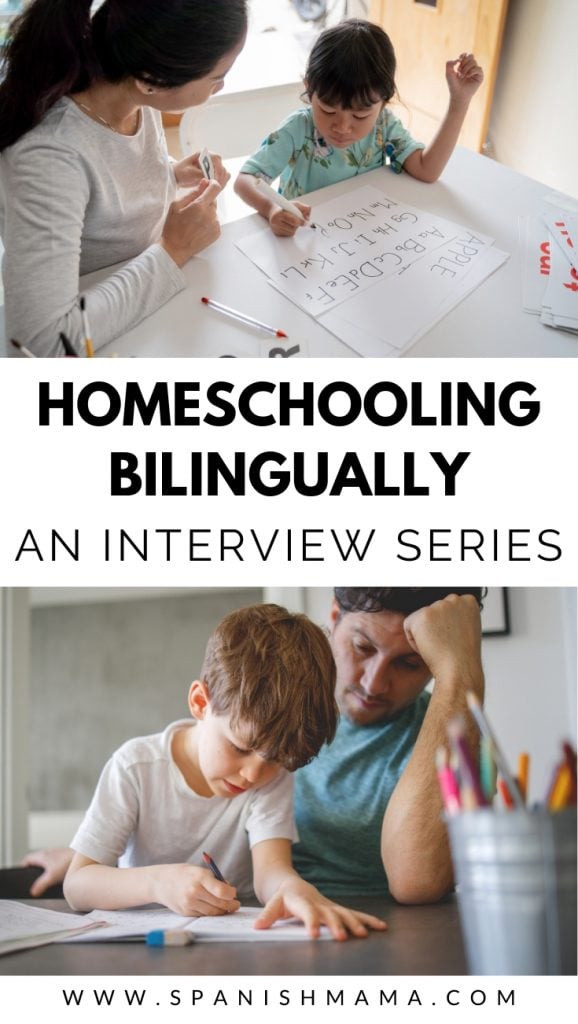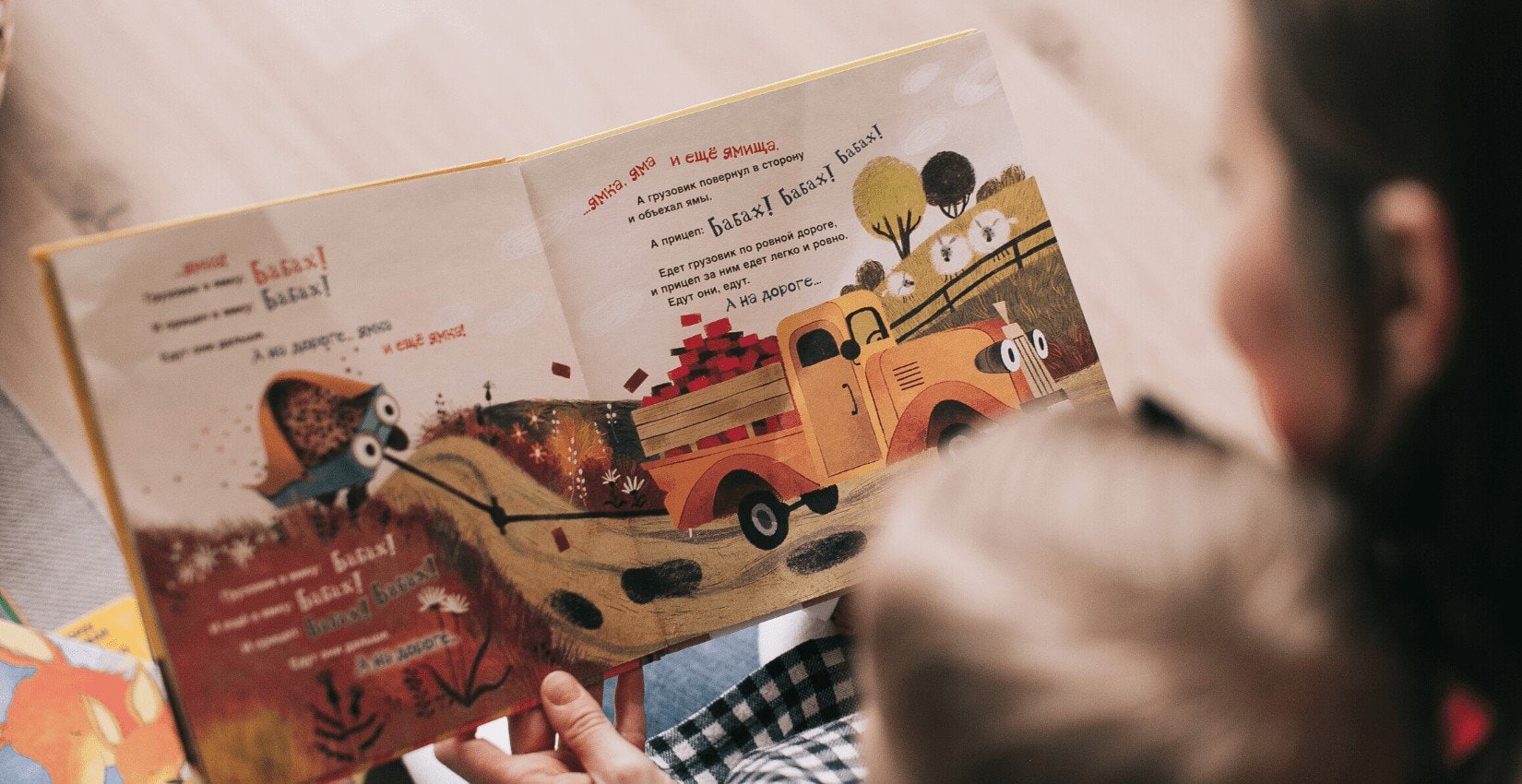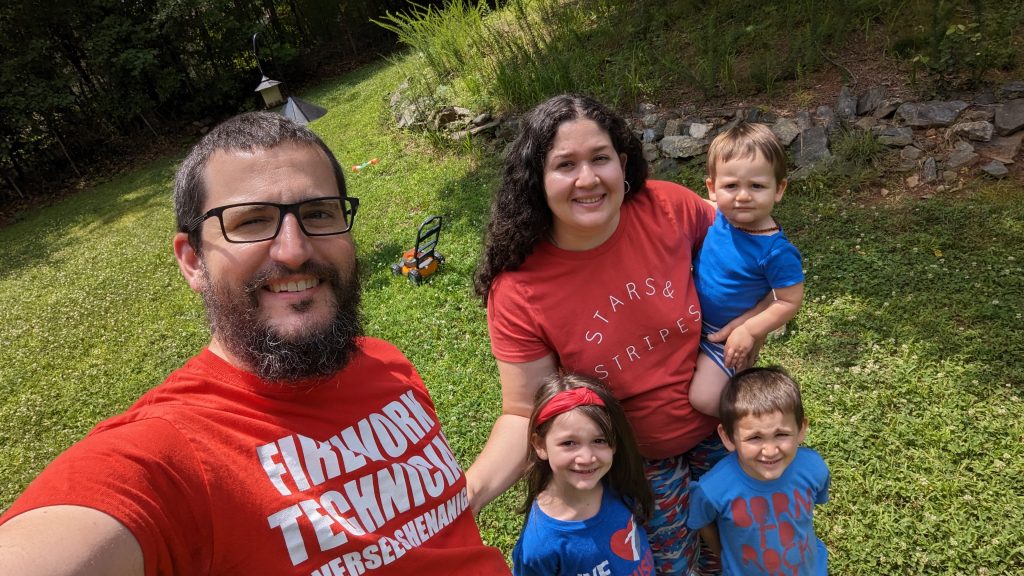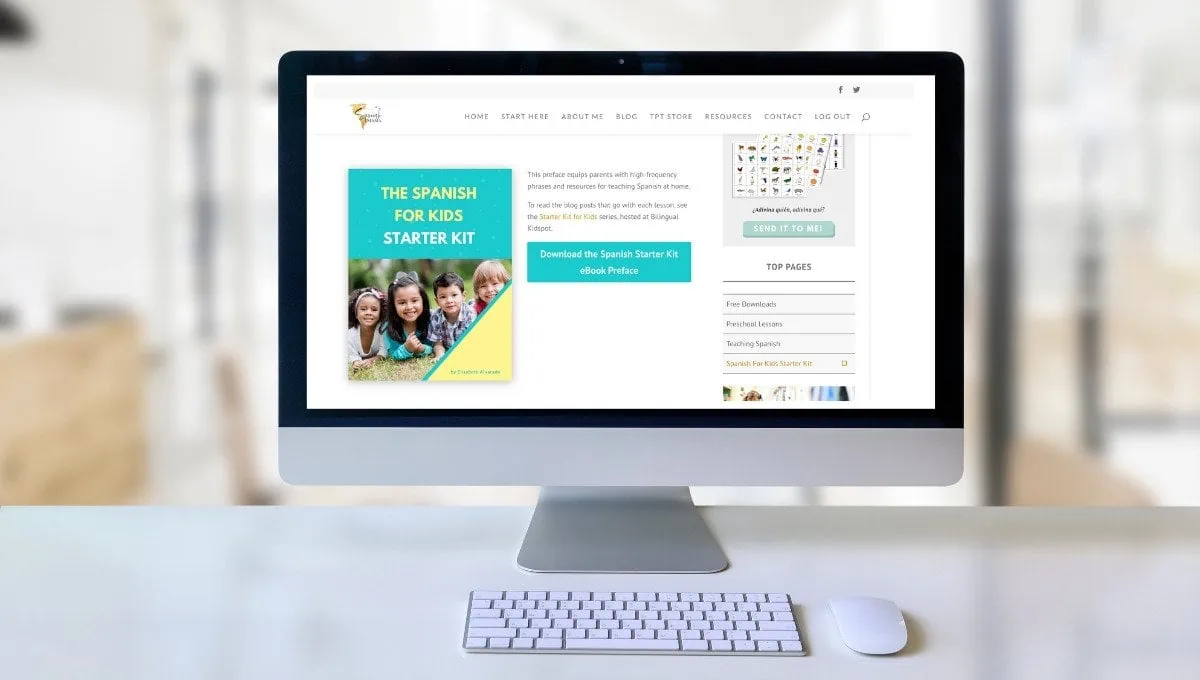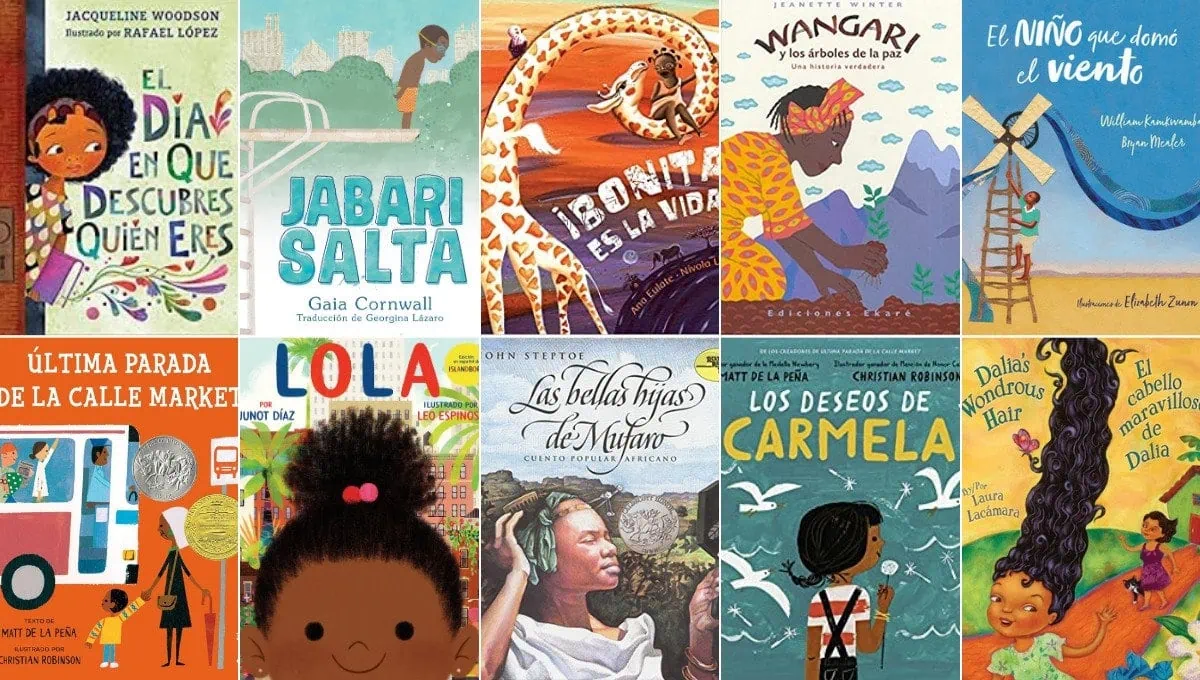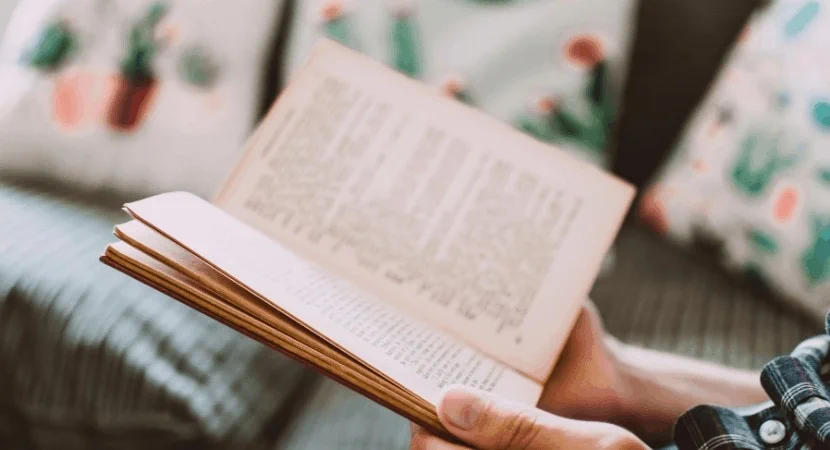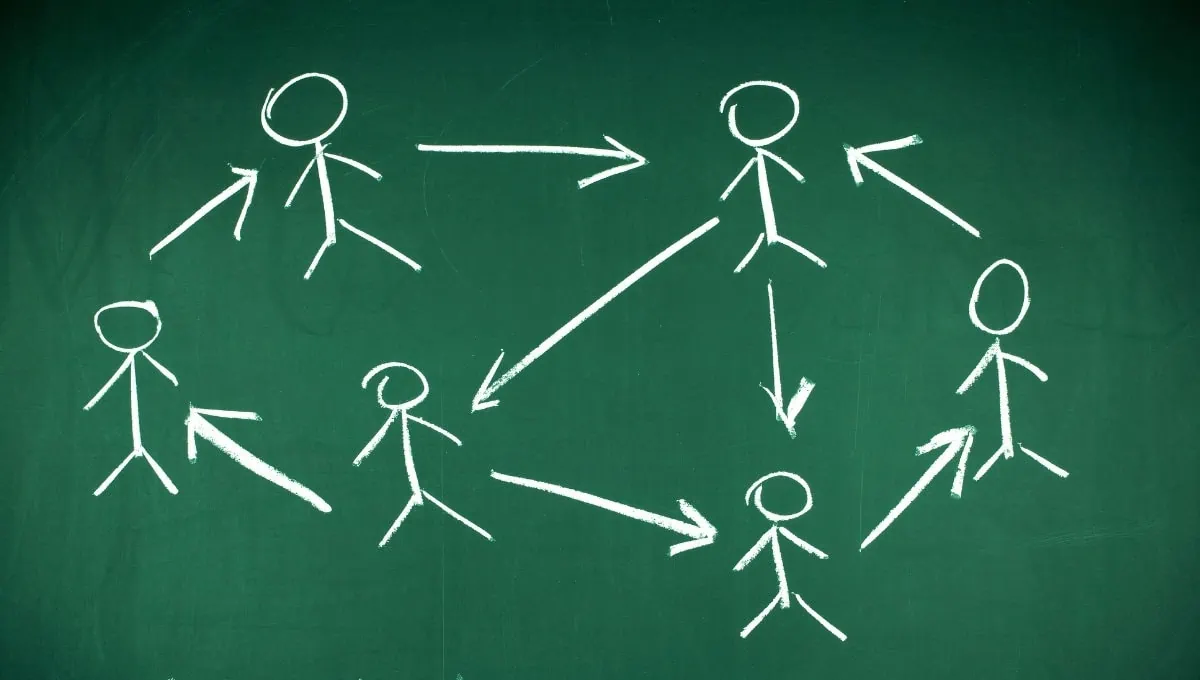Bilingual Homeschooling: 6 Spanglish Families Share
Inside: 5 families share how they are homeschooling bilingually, in Spanish, English, or both.
Ready for another round of Spanglish family interviews? This time we’re hearing from families who are homeschooling bilingually!
Homeschooling among Latinos and Spanish-speakers has steadily grown over the past decade. Many families love the freedom and flexibility homeschooling affords, and bilingual families often find they can support the minority language better.
Though it’s definitely easier to find curriculum and support in English, Spanish-language materials are on the rise too. (Teachers Pay Teachers may be a source that’s new to some families, and you can see my post on online Spanish curriculum for some free resources you can use at home!) Hopefully we’ll see the availability of Spanish curriculum and materials continue to grow.
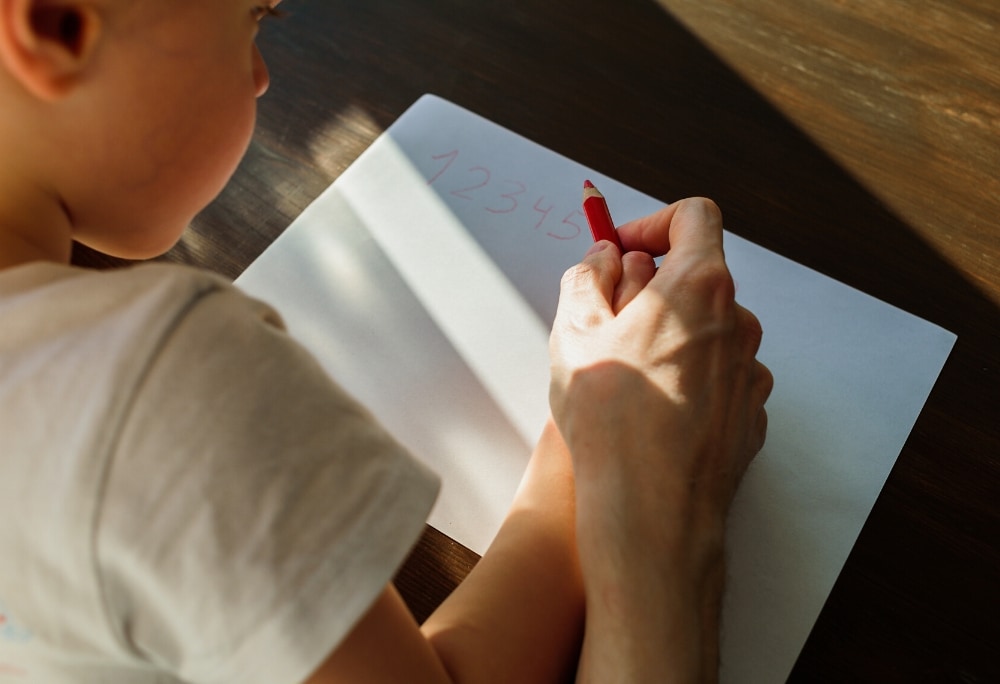
Related: Homeschooling in Spanish: Tips for Non-Native Speakers
Here are the prompts each family responded to (you can click on the title to jump to that section of the interview):
1. Please introduce yourself and your family.
2. What does language look like in your home and what guidelines have you set up?
3. How long have you been homeschooling and what were some reasons you decided to homeschool?
4. What resources/curriculum are you using?
5. What challenges have you faced?
6. What is working well?
7. What resources do you recommend to other bilingual homeschooling families?
8. What is your best advice to other families wanting to raise bilingual kids?
Let’s hear from our families!
MEET OUR HOMESCHOOLING FAMILIES
Spanish Mama: Please introduce your family.
Jana: My name is Jana, and I grew up in rural northern California. I heard a lot of Spanish in high school, but that was about it. After traveling the world in college, I was drawn to Latin America and started learning Spanish. My husband grew up in Bogota, Colombia, and learned English in school.
A teaching position took us to Panama, where we spent the first decade of our marriage. All five of our children were born in Panama, but spoke very little Spanish. It wasn’t until we moved back to Colombia, where we went into Spanish Boot Camp mode! Our children were 9, 7, 4, 2, and 2, when we got serious about being a bilingual family.
Angelica:
We just moved to Texas and are getting back to escuela en casa. I have been
homeschooling since my oldest was in kindergarten and she just started her freshman year. Yikes! How the time has flown…
In addition to a freshman, I also have an eighth grader, a second grader and a preschooler. Before we had children, I taught Spanish and German at the high school level. I grew up in an English-speaking household, but always heard Spanish spoken amongst my grandparents, great aunts and even my dad, although it was not ever directed at me. I was also an exchange student to Germany during my junior year of high school. Because of these experiences, I knew that I wanted bilingualism to be a part of my family’s culture and my children’s heritage.
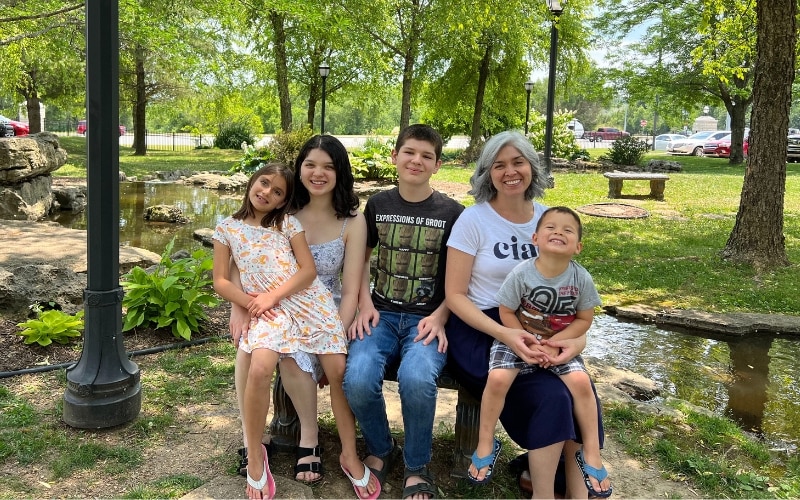
Miranda: Hola! My name is Miranda. We are a bilingual, interracial family. My husband is Dominican American. I am Cuban Chinese American. We have a 4.5 year old son and a 2 year old daughter. My husband and I have lived in several states and abroad. So from day one, a family priority has been to raise our kids to be bilingual. We want our children to be proud of their culture and have the advantage in life of speaking more than one language. Although our kids are not Kindergarten age yet, I have been doing “escuela en casa” since deciding to stay home with them full-time. (Follow Miranda at @thecrunchymami on Instagram to see more!)

Miranda’s family
Carrie: Hi! My name is Carrie, and I am married to Mardo. We met and married in Guatemala when I moved there to teach after college. Our oldest son Micah (age 7) was born in Antigua, Guatemala, and we moved to the United States when he was 18 months old. Since then we added a second son Isaiah (age 4) and a daughter Adriella (16 months) to our bilingual, multicultural family. (Follow Carrie at @grandesideasparapeques on Instagram for lots of good ideas!)
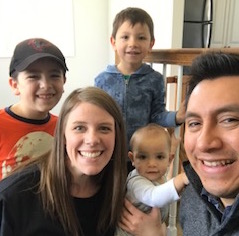
Carrie’s family
Brianne: Hi! My name is Brianne and I’m a native English speaker. Before having children, I was a middle school math teacher. I decided I wanted an international teaching experience and I moved to Puerto Rico for 6 years to teach at an English speaking school. I had taken Spanish in school and considered myself “conversational” before I moved. Ha! I learned very quickly that, while my vocabulary was great, the people spoke so quickly that I couldn’t even hear where one word started and another ended! A very nice guy took me under his wing and helped when my car broke down, or when I needed to figure out what to call the bulb inside the toilet tank, or when I got lost in a bad side of town. Less than two years later we were married. Noel’s native language is Spanish, but he learned English at 8 years old when he lived in the States. Our oldest child was born and twins followed 17 months later! We moved to North Carolina to be closer to my family and our youngest was born a couple years after that. Félix is now 10 years old, Lionel and Noemí are 8 and Simón is 5.
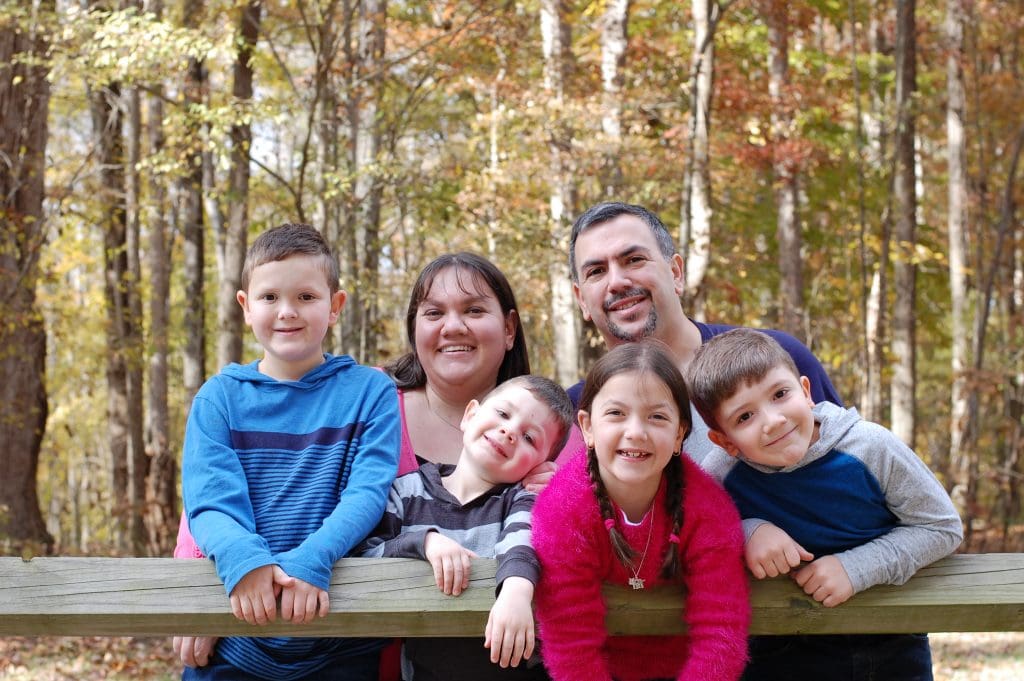
Brianne’s family
Gina:
I’m Gina, first generation Cuban American. Spanish was my first language & I didn’t learn English until I went to preschool. English is my main language, though. My husband Anthony is half Italian on his dad’s side, while his mom is American from Alabama. We have 3 children – a 6.5 year old girl, a 4 year old boy, & an 18 month old boy. (Instagram: education.in.spanglish)
THE SPANGLISH MIX
Spanish Mama: What is your family’s approach to languages at home? (OPOL? ML at home? How much of the day is in Spanish vs English?)
Jana: OPOL seemed like the logical option since my husband’s native language is Spanish and mine is English, but after many attempts, we could never make it work for our family.
What really made the switch for us, was doing half of our homeschool day in Spanish. I was barely ahead of my children when we started, and asked my husband “Cómo se dice” constantly because I didn’t have “teacher vocabulary” in Spanish. If there was video evidence from those days, it would be destroyed because it was that bad. Just kidding, sort of, but I share that for all of you perfectionists that are afraid to start until your Spanish is fluent. I was in that trap for way too many years, and don’t want you to go there. There is no better day than today to start! (Or maybe tomorrow after you prep today. hehe)
Fast forward through the awkwardness, and we just finished our 4th year of homeschooling 4 hours a day in Spanish. It is now routine, as we start speaking Spanish at breakfast and continue that routine until we break for lunch. Start with a 15 minute story time or sing along and work your way up.
Miranda: Our approach is to speak as much Spanish as possible. This is difficult since both my husband and I are predominantly English speakers. Even though we are Latino, we were both born in the states, we both think in English, and we both have a more extensive vocabulary in English. Nonetheless, we surround our children with the Spanish language whenever possible (Spanish books, Spanish movies, Spanish play dates, etc.).
Carrie: We don’t follow a strict language approach in our home. My husband only speaks in Spanish, and he and I speak Spanish with one another and as a family. However, when it is just the kids and I, I typically speak a mix of English and Spanish to them, depending on the circumstances. I would say our day is about 50% Spanish and 50% English right now.
Brianne: I suppose we would be considered minority language at home. When Félix was born we originally were using the OPOL approach and he was getting Spanish from the community as well. He was 19 months old when we moved back to the States and his language development was lacking. A speech therapist suggested that we drop Spanish and speak only English at home. Within a few months he lost all of the Spanish he knew and we never started it with the younger three. We sent the oldest three to an immersion school and they learned quite a bit of Spanish before we pulled them out to homeschool. Our intention was that my husband would continue the Spanish at home but it always seemed like there was some challenge to overcome and it just never happened. After two years of homeschooling, I was feeling very depressed that they were losing their chance at learning their father’s native language and all of the opportunities that come with being bilingual but I just didn’t know how to convince my husband to work with them.
One night I came across an article on the Spanish Mama blog and I felt convicted that if I wanted a change, I just had to make it. I woke up the next morning and informed my family (in Spanish) that I would no longer be speaking English to them. I was met with many concerns since my youngest did not speak even one word of Spanish. There were many tears (from all of us), lots of whining, grumping, even flat-out refusing to listen from the kids. That was four months ago and I have refused to give in or give up. Amazingly, all of the children now understand pretty much everything in Spanish and will often correct my grammar. The oldest and youngest will speak in Spanish occasionally but the twins will only speak if I make them. We’re working on that. Comically, my husband was the one that had the most trouble switching. He says it’s difficult to speak in English at work and Spanish with the family. He probably uses about 70% Spanish with me now and about 50% with the kids. It increases a little each week.
Gina:
I used to say we were OPOL-ish, but these days I am speaking a good bit of English to the kids. Daddy still speaks a fair amount of Spanish to the kids though he’s not fluent. We try to do almost
all of our screen time in Spanish & the majority of our books are in Spanish. We use both Spanish & English throughout our day as we see fit & depending on the circumstance. Our 6.5 yo is fluent
in Spanish & our sons understand both languages well, though our 4 year old is a little reluctant to speak Spanish.
HOMESCHOOLING BACKGROUNDS
Spanish Mama: How long have you been homeschooling and what were some reasons you decided to homeschool?
Jana: We are just starting our 11th year of homeschooling. As a former public school teacher surrounded by a family of educators, homeschool wasn’t even on my radar! It was when our first child was born that things started to change. As new parents coming from two very different cultures, we started evaluating what traditions and values we wanted to pass on to our children. As I stayed up way too late nursing babies and reading homeschool mom blogs (pre-Social Media folks, hehe) the desire to homeschool grew. Our biggest reasons: 1) Educating our children with a biblical worldview 2) Flexibility to customize their education 3) We like to spend with them!
Angelica: We have been doing this bilingual homeschool thing for about 10 years. We decided to homeschool because we wanted to be able to help shape our children’s values and worldview and to be by their side as they learned and grew, rather than on the sidelines. We also wanted them to have a more immersive language experience than could be attained at the schools in our area. It was important to me that our language learning be based as much on natural acquisition as possible, rather than direct language instruction.
Miranda: A year ago, I decided to leave my 10-year career to spend more time with our kids. So I have been homeschooling (and supplementing a few days of preschool) for about one year. We decided that we wanted our children to learn about things that are not always the focus in school: values and character education, Black and Latino history, coding, etc. In the future if we decide to “send” our kids to school, we will continue to do some Spanish homeschooling so that they are learning in more than just one language.
Carrie: We have been homeschooling for a year now. My son did kindergarten in public school, and then we made the switch to homeschool for first grade. Some of the reasons we decided to homeschool were to give our family more flexibility to travel (little did we know COVID-19 would prevent that!), to be able to incorporate more Spanish into the day, and to be able to choose the curriculum and content of what our son would be learning. As a family of faith, it was really important for us to be able to incorporate our Christian worldview into our children’s education.
(Trigger warning for the new few paragraphs: mention of self-harm. Click here to skip.)
Brianne: I never thought I would homeschool. I imagined dropping off my future children to their kindergarten teachers a little misty eyed as they happily ran into their classrooms with their peers. When I started teaching middle school, however, the first prickles of discomfort with that idea began. They were getting a top-notch education from their teachers, but they were also getting a black-market education from those peers that still makes me cringe.
While I was pregnant with my oldest, I had every intention of dropping him off at daycare and returning back to work. My whole life changed the instant the nurse placed him into my arms. I thought my heart would rip from my body if I had to let another person care for him and so my husband and I agreed that I would stay home and tutor instead. I enjoyed tutoring because I was able to give students the one-on-one attention that they weren’t getting at school and math was finally “clicking” for them under an environment where they could ask questions without feeling embarrassed and I could see where they were making each and every mistake. Shortly after, my 12 year old cousin attempted suicide because of bullying at school. My husband and I decided then and there that, although we would send them to school for elementary, we would pull them out at the middle school years.
When it came time for preschool, all of the other parents were talking about how excited they were for their few hours of free-time each week but I just didn’t enjoy it. My favorite time during the day was when I picked them up from school and we were all back together again. We started to discuss homeschool again when the twins started to show their personalities. One would be ready for school early and one would be ready just in time. Would we separate them? Hold one back? Push one forward? At that point we found a Spanish Immersion program and thought it would be a great solution. The kids could learn Spanish and the twin that might be bored otherwise would be learning a new language which should even the playing field. Just like my vision of long ago, I dropped off our oldest misty-eyed to run in with his peers…and he really succeeded at school according to the teachers. They told us how kind, loving, and friendly he was. But, why wasn’t he writing his name on his paper? They said he didn’t know how, but he’d been doing it at home since 3 years old! Why did his artwork not look like his? Oh, his neighbor did it for him because he was too busy talking to finish in time. My discomfort started to rise again. He was capable of so much more and he was pretending that he couldn’t do the work but his teachers weren’t noticing. Then, an older boy started to become his “friend” and suggest all sorts of fun things he could try – like throwing rocks at the window to see what would happen. His attitude at school began to change and he was getting in trouble all of the time. Thankfully, his teacher let us know what was going on and we decided we would pull him out at the end of the year. We intended to send the twins for two years as well to start their Spanish education. Halfway through kindergarten the teacher told us they’d become “classroom helpers” since they could already read at a second grade level and could do all of the math for the year. While I’m all for a child helping another out, ours weren’t learning anything except the Spanish and I knew we could continue that at home. At the end of their kindergarten year, we officially became a full-time homeschooling family! We’ll be starting our 4th year of homeschooling this year (although the twins didn’t join us until the second year). We decided that we wouldn’t send our youngest to public school and he just finished his kindergarten year with us!
Gina: My daughter is now in first grade & we’ve been homeschooling since preschool, which for her
was full immersion Spanish. We are homeschooling for many reasons, including Spanish,
culture, religion, & freedom to learn how it best suits our kids.
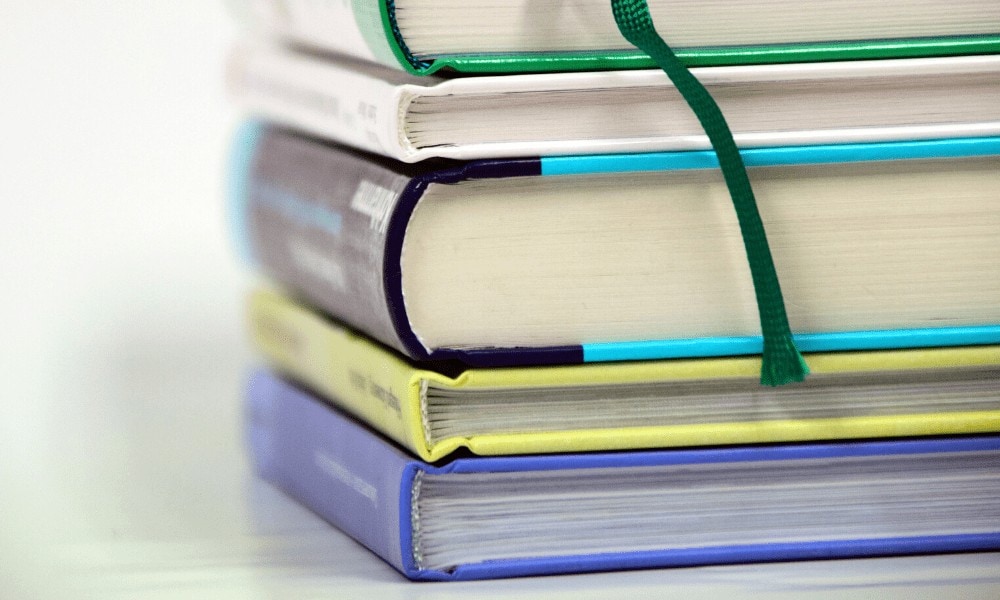
BILINGUAL CURRICULUM
Spanish Mama: What resources/curriculum are you using?
Jana: For second grade and under we use resources from Spanglish Schoolhouse. (After teaching Preschool and Kindergarten many years, I had created bookshelves full of binders for any theme you can think of. However, it was all in English and we were starting our Spanish Boot Camp phase! My husband is a graphic designer and translator, and piece by piece we have updated those resources into Spanish and English. That is how Spanglish Schoolhouse was born.) Pasitos is our Preschool curriculum, and we will be releasing the other 2 years as we go.
For learning how to read in Spanish, we use Alfa Animales. For learning how to read in English, we use All About Learning.
For Math, we use Math-U-See starting in first grade.
For our core curriculum, we use My Father’s World. We have finished the first 5 year cycle, and this fall we will be going through it again but adding in as much Spanish as possible. I love it because I will be teaching 7 children using the same core curriculum!
Angelica: To that end, we use a lot of Spanish picture books and novels, as well as as many authentic language resources as I can get my hands on. My very favorite is the curriculum for reading by Rod and Staff (Milestone books). We have used this series from the very beginning and are still using it for my high schooler. We do it at a much slower pace than native speakers would, but it is an excellent resource. They also publish a grammar and writing textbook called Lengua that we begin around 4th grade. We have also used their science textbooks, with some supplements and modifications. One caveat- the publisher is Mennonite so there are definitely
elements of that faith and culture but we just discuss things as it comes up and it is not a issue.
For math, there is a great online program called Dreambox that you can choose to use in Spanish and Handwriting without Tears has a Spanish curriculum as well. I often supplement history, science, geography and writing with things I find on TeachersPayTeachers (especially Nikki and Nacho, and Spanish Mama) and the Magic Treehouse series in order to keep as much of our schooling in the target language as possible. I use a Montessori approach with my younger kids and MiMontessori.com has a ton of printable resources.
Miranda: At this age, we don’t use a formal curriculum. I do a lot of research online to find ideas, crafts and activities for the kids. I often use children’s books as the “glue” of a homeschool lesson. I will buy things off TpT or create my own materials. This is how I came across Spanish Mama. 😉
Carrie: For our first year, we used “The Good and The Beautiful” curriculum for both math and language arts. Pinterest and Teachers Pay Teachers have both been amazing resources to supplement the curriculum and for additional subjects like science and social studies. This summer we are working on learning to read in Spanish, and we are using a mix of resources I picked up years ago in Guatemala as well as books from Coquito.
Brianne: With lots of kids so close in age/grade (we will have a 5th grader, two 3rd graders and a 1st grader) and still needing a lot of parent interaction, we decided on a family-based, unit-style curriculum. We’ve made a few changes this year but will be using Layers of Learning which is project-based and suits our kids’ learning styles well. We follow the Singapore Math curriculum with a lot of added in practice from Mom’s old teaching days and our kids practice typing individually. We didn’t add in the Spanish for the first several years but that changed last year. Their main source of Spanish is immersion at home. We introduced the little one to it with Calico Spanish and we’ll be using some Spanish grammar and reading workbooks this fall. I’m still looking for a great Spanish curriculum though! We also read every day in Spanish and in English. Like most homeschooling families, we pull in other resources as well – Netflix, Amazon Prime, XtraMath, library books, zoo membership, we cook together, they’re learning to sew, they’re active in Girl Scouts and Cub Scouts…we learn all day, every day even if it’s not in the classroom.
Gina:
Previously I made a lot of stuff up myself, but I am happy that there are more resources these days. This year, I am using AmblesideOnline for my daughter. It is a Charlotte Mason curriculum in English, but what I have done is look at other websites for Charlotte Mason homeschooling en español & I sub out about half of AO.
CHALLENGES ALONG THE WAY
Spanish Mama: What challenges have you faced so far?
Jana: Having 5 children under 7 to start! Homeschooling while pregnant and with littles means you need to give yourself grace and embrace the season you are in. As far as language learning, getting through our first child’s Spanish strike was stressful. I took them not wanting to speak Spanish personally. Now, I’ve learned to just keep things consistent and playful, and they will come through. Understanding the different phases of language learning has also been super helpful to know what is developmentally appropriate and what to realistically expect from our children at each level.
Miranda: You need to invest a lot more time when you do not use a pre-made curriculum. I find that a lot of Spanish materials, tools and resources are for people or kids that want to learn Spanish. It is harder to find resources for fluent children who want to ‘learn’ in Spanish (e.g. mathematics, history, science, etc.). Also, it has been a challenge to find quality Spanish books and materials with diverse characters.
Carrie: One of our biggest challenges to homeschooling thus far is staying motivated. We struggled a bit to get into a good routine and to be sure we got enough school work done at a good pace. I love the flexibility of homeschooling, but it is easy for me to abuse that power too. I found that our weeks went a lot smoother when I prepped in advance and had a good schedule for us, but there were probably a bit too many weeks when I didn’t prepare and felt the effects of that too.
Brianne: Hmm. At first we got a lot of backlash for planning to homeschool our children. My mom was probably the most vocal but other family members and friends voiced their opinions on why it was a bad idea. At first I tried to explain our reasons for homeschooling, the benefits, my plans for how to overcome obstacles. Finally, I realized that it just wasn’t worth the strife since the decision was ours and we weren’t open to suggestions. I don’t blame them in any way – it’s been the norm for the last 100 years and they cared about the education our children would be getting. But over the last several years the comments have dropped off. Our children are thriving and learning (and perhaps they finally realized we weren’t changing our minds!) At the very beginning my grandmother told me how ridiculous the idea of homeschooling was. She called me a week ago after my 2nd grade daughter wrote her a note in cursive, to tell me what a wonderful job I was doing and that she was glad they had a “stable” education during this pandemic. Of course, we have the normal challenges of homeschool – bad attitudes, procrastination, everyone working in the same space (my husband works from home as well) but I don’t really think those are unique to homeschooling. Honestly, one of the hardest to overcome was my own temper. My first year I yelled…a lot. I had to learn that yelling at the kids was tantamount to an adult temper tantrum and that I was teaching them bad habits. I have lots of people tell me they couldn’t homeschool because they would lose their temper too quickly. I promise you, you can learn to control it! As for the Spanish, since I am not fluent, I knew that would be a challenge from the start. Every single morning that I wake up I have to mentally prepare myself for speaking Spanish all day. It’s really hard and lots of days I want to give up. But I just convince myself to finish out the day and decide in the morning whether to continue or not. However, seeing how much language they’ve acquired in the last few months continues to spur me on.
Gina:
It takes a good bit of time to do all my homework when piecing together my daughter’s curriculum. It can be difficult to select books in Spanish, since I have to research every title to see if it’s either a well done translation or a quality Latin American text.
SUCCESSES
Spanish Mama: What is working well?
Jana: Having a need to speak Spanish! This is such an important piece of the language learning puzzle. (This doesn’t mean that you have to live in a Spanish speaking country or marry someone who speaks the Spanish. Also, those things don’t guarantee a bilingual child.) It does mean creating an atmosphere where your children will need to use the language. There are many ways, but for us it has been making certain subjects in our homeschool routine Spanish.
Angelica: The biggest challenge I face in homeschooling is that there is a difficulty finding appropriate resources as my children grow older and more proficient in Spanish but are still not as proficient as a native speaker of the same age. In addition, their English abilities still tend to outstrip their Spanish and a gap arises between what they can cognitively understand in one language and the limitations of the other. There are many resources for younger kids to learn vocab and “play” with the language and there are a lot of grammar-specific resources for older learners, but it’s hard to find the right balance of meaningful content and the right language difficulty for my middle schoolers. Much of their learning at this level has shifted to being predominately in English. I supplement with books from the ¿Quién fue? series, the Sobreviví series and the missionary biographies from YWAM. There is a new resource I started using this year called Spanish Storylearning, that looks to be a good way to study real topics in history and science at a second language-learning level. I also really like the writing project guides from BraveWriter. I find that I can easily adjust the requirements for the projects and have my kids
do them in Spanish.
Miranda: Following a set routine/pattern to our school morning. For example: Kick off with a song, read a book, watch a short film/music video, do a craft, play a game or do an activity, and then break for a snack. We also have a Montessori style set up at home. I rotate toys and task-like activities out on open shelves for when the kids are just playing freely. This helps us keep order in the house but more importantly engages them in independent play.
Carrie: Having a curriculum was a lifesaver for us! It was super helpful for me to have a guide for what to teach and how to teach it. As a first year homeschooling family, I loved how easy it was to follow the “The Good and The Beautiful” curriculum and that I didn’t need to spend tons of time pulling together lessons from a bunch of different sources. The book included assessments which made it easier for me to evaluate his learning and see his progress over time too.
Brianne: I love having my family together so often and I love that they’re immersed in Spanish. My kids get to spend copious amounts of time with their dad and I can’t think of anything more important to their growth. Each kid has areas that they excel in and areas of weaknesses that we can really focus on at home. When my son came home from school his writing was almost illegible but now he can write neatly in print and in cursive. My boy twin loves Geography and can name and locate over 100 countries on the world map and many of their capital cities. My daughter is great in math and isn’t held back waiting for the other students to catch up. My youngest was able to start kindergarten before he turned 5 and he totally rocked it! I love seeing their accomplishments and their emerging personalities. I know they were exposed to amazing Spanish at school and sometimes I feel bad about the loss, but they’re learning things at home that they’d never learn at school – like the various words for “bottom” in Spanish and how to say “you have stinky toots.” Ha!
Gina:
Even through the challenges of the past few years homeschooling, my husband & I remain committed to our kids’ education & making sure Spanish remains a priority.
RESOURCES
Spanish Mama: Any resources (blogs, books, publishing companies, etc) you would recommend for other families?
Jana: For stocking up your bilingual library – UBAM for children’s books, and YWAM and Answers In Genesis for biblical resources.
Miranda: Leverage Scholastic Book Clubs to expand your library at home. It’s nice that you can easily filter for books in Spanish and by age. Also, don’t be afraid of digital resources as supplements. We are a limited TV time family. Nonetheless, Netflix has a decent amount of audio language shows and films. There are good apps like Fabulingua, Osmo Monster, etc. Plus, my toddler loves the music videos from Atencion Atencion on YouTube (the songs are catchy and educational).
Carrie: There are so many resources out there! I thought the books “Maximizing Your Child’s Bilingual Ability” by Adam Beck and “The Brave Learner” by Julie Bogart was helpful. I really like the Spanish flash cards by Trend Enterprises (available on Amazon), and I have had good luck ordering Spanish books from Scholastic. Blogs like Spanish Mama have offered great ideas too! 🙂
Brianne: I recommend XtraMath to all parents, whether they homeschool or not. As a former math teacher I know that quick recall of math facts will make for a much smoother math career. Calico Spanish is amazing for any family looking to begin their Spanish journey. You’ll meet Pedro el pez azul and his friends through video content and storybooks. You can check out some of their songs on YouTube for free. Our public library has been an invaluable resource for books in both languages. We live in a very small county so we actually pay for the annual membership of the much larger adjoining county. I would also say that Facebook groups have been great for me. I’m a member of one for our curriculum, some for homeschooling (local and worldwide), and several for raising bilingual children. They give me great ideas and often the push I need to keep going when I feel burnt out. Scholastic.com will allow you to have a Teacher’s account if you are a homeschooler and I love their annual $1 book sale.
Gina: Instagram has really been a great resource lately. Using hashtags is basically like looking things
up by keywords.

ADVICE FOR OTHER FAMILIES
Spanish Mama:
Jana: You can do it! It is possible. This bilingual homeschool journey felt like a bumpy gravel road when we first started. However, with more traffic and attention, it is like another section gets paved every day to make the ride more smooth. Probably the best advice is, connect with others on the journey! If you don’t have any bilingual homeschoolers near you, then reach out online. If you have children under 6, join our Spanglish Preschool Mamas FB group. Groups like Teaching Your Kids Spanish and the Language Learning at Home Community are also great places to ask questions and find other bilingual and homeschool friends.
Angelica: I have found that it is harder to maintain a bilingual homeschool the older my kids get and it has been necessary to evaluate and reevaluate my goals and purposes for choosing this path. There is a point at which you ask yourself, “Have I done enough?” “Are we bilingual enough yet?” It sounds strange but there is no “official” finish line so I have had to consider over and over again how to transition from this being something I want for my kids and have put a lot of effort into, to how do I hand this over to them to decide what they will do with it on their own?
For example, my high schooler wants to learn French but she currently has no room in her schedule because of her combined English and Spanish coursework. We have agreed that she will do one more year of direct instruction and then take the collage CLEP exam for Spanish next fall. If she does well, she can “give up” Spanish to make room for other subjects. She will still speak it at home with us, of course. One of my children does not grasp the grammar as easily as her siblings so I wonder if her acquisition of Spanish should be more centered on conversation and comprehension rather than literacy? And on it goes, adjusting, tweaking,
reevaluating at each new step and for each child, accepting that bilingualism can and will look different for each member of our family even though we teach them all under the same roof.
Miranda: 1. Your Spanish doesn’t need to be perfect. I make a lot of mistakes and forget a lot of words. Just do your best and give yourself grace. 2. Rely on other resources to keep your kids speaking and hearing Spanish. For example, if you need a nanny or babysitter, find a native Spanish speaker. Ask at every library possible for Spanish books and Spanish story times. Seek out other families in your area via social media whose kids speak or are learning Spanish. 3. It does take work and commitment, but it is so worth it in the end. My 4.5 year old teaches my husband and I new words every day! He also speaks predominantly in Spanish to his baby sister, so now he is a resource to our family! Follow me on Instagram @theCrunchyMami if you want some inspiration.
Carrie: ¡Sí se puede! 🙂 I would say my best advice is to be sure to define your “why” so that you can continue to go back to it in the hard moments (because there will be plenty of those!) Write it down, come up with a sort of mission statement for your choice to homeschool, and find others to encourage you when you need it most. Find like-minded people to follow online (or better yet, in person!) so you have a community around you to avoid feeling isolated. Remind yourself often of all the amazing benefits to homeschool bilingually and what a positive impact it will have in your children. Celebrate the small things and have fun! 🙂
Brianne: Do it! I really can’t think of a single reason not to. Being bilingual increases opportunities for your children’s futures and helps their brain development. Many monolingual children of bilingual parents express their frustration with the parents for not teaching them a second language, but I have never heard the opposite. Even if, like me, you’re not fluent, you can still expose them to the language. Their brains will be more receptive in the future to studying on their own. We live in a world with amazing access to technology, books, different cultures, and multilingual people living in our community. The help is there if you need it. Not everyone wants to jump in to immersion overnight like I did, but even an hour a day is a great start to your bilingual homeschool journey. Oh, and your kids will complain if they’re old enough to understand but they’ll thank you one day.
Gina: Remember your reason for sharing your language & culture with your children, & have fun!
MIL GRACIAS to the wonderful families who contributed to this post! If you are homeschooling bilingually as well and would like to be interviewed, send me an email at [email protected], with “Bilingual Homeschool Interviews” as the subject line. 🙂
